Feel Electric - Episode 1: Sound development
This is how future sounds
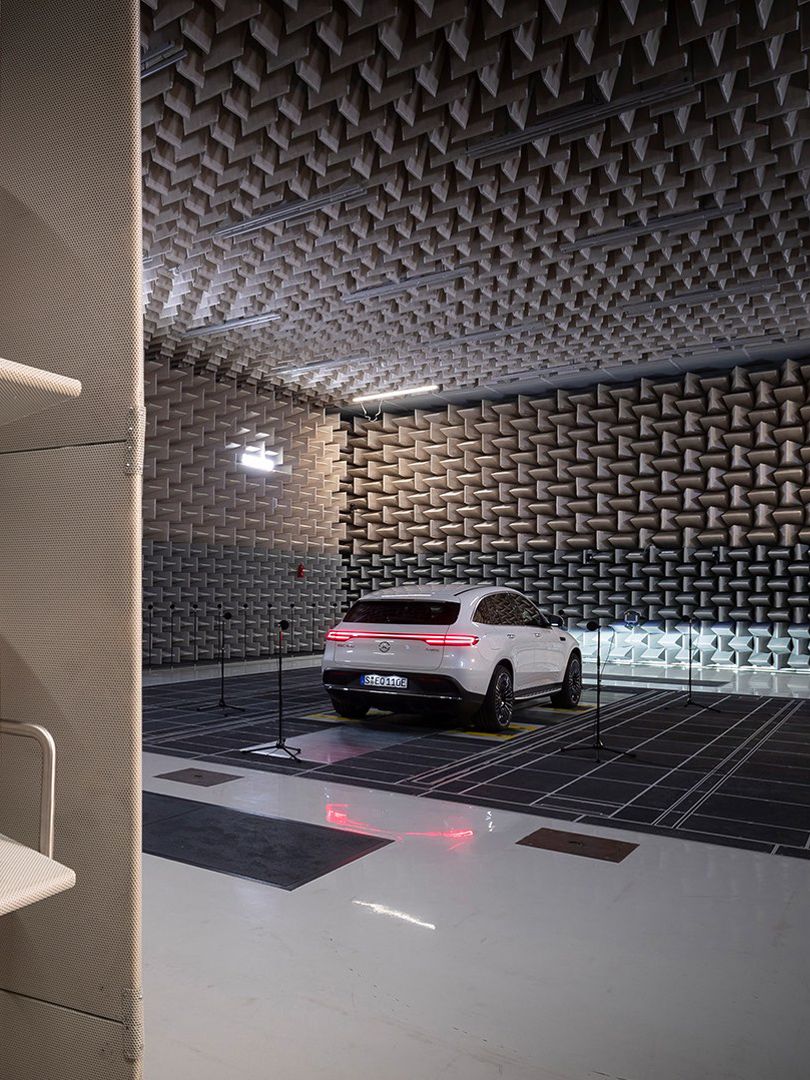
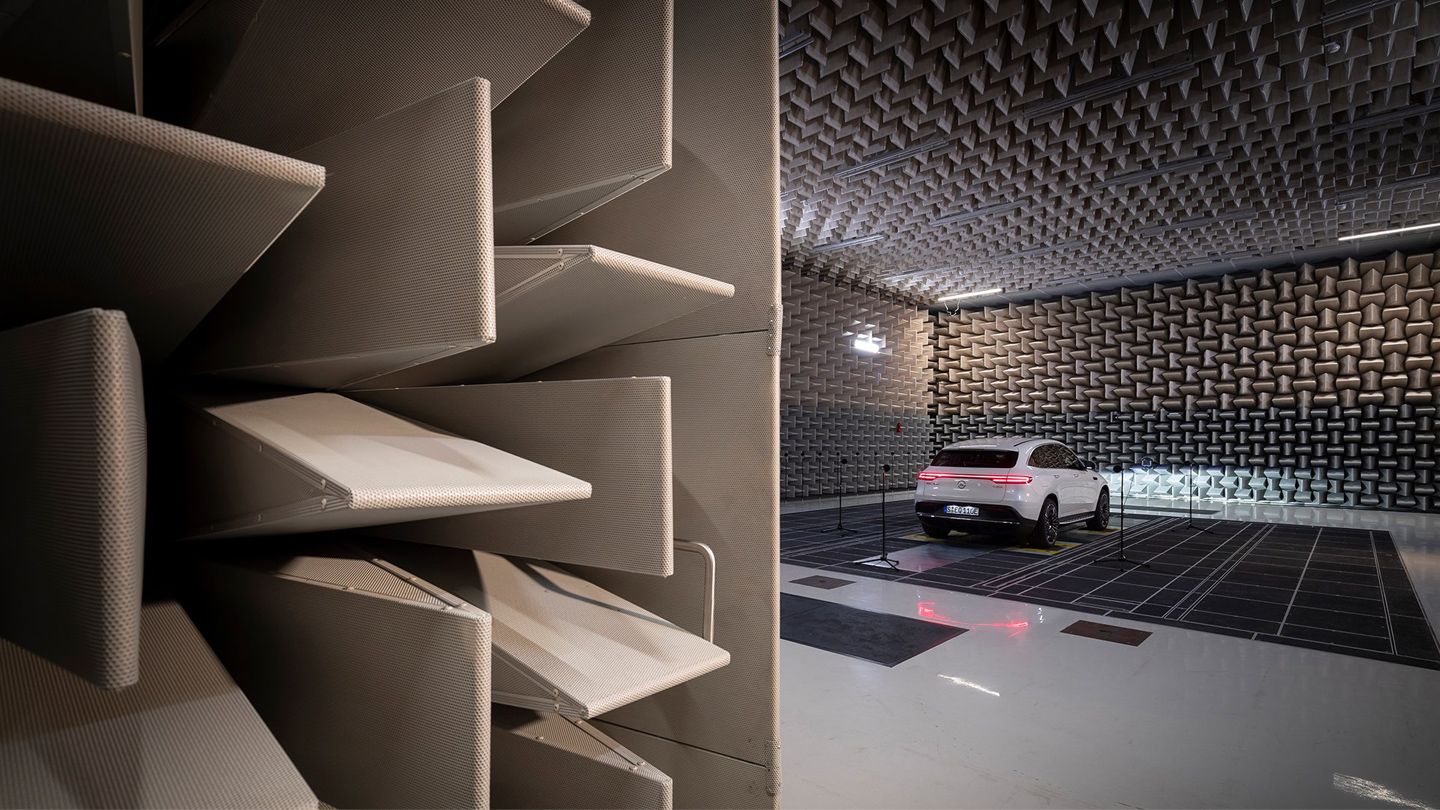
Mercedes-AMG is ushering in a new era with its fleet of hybrid and electric vehicles. The first step towards electrification involves further developing the close collaboration between Mercedes-AMG and the engine experts at HPP. The goal? To merge the performance of Formula 1 with the production vehicles of the future. The Future of Driving Performance promises not only more power, but an immersive, multi-sensory experience. Each episode of our new "Feel Electric" series takes you behind the scenes of this exciting new future. We start at the heart of every AMG: the distinctive sound.
From the exterior to the experience behind the wheel, all Mercedes-AMG sound development engineers are united in their pursuit of the perfect audio experience. Indeed, it takes a team to produce the characteristic symphony of an AMG engine. On behalf of their colleagues and the entire development team, we had the pleasure of letting Michael Pommerer and Jörg Blaeß take us into the world of sound components and exhaust system development. One thing quickly became clear in our conversation with the two engineers: sound development is just as important and emotional for Mercedes-AMG as it is for customers.
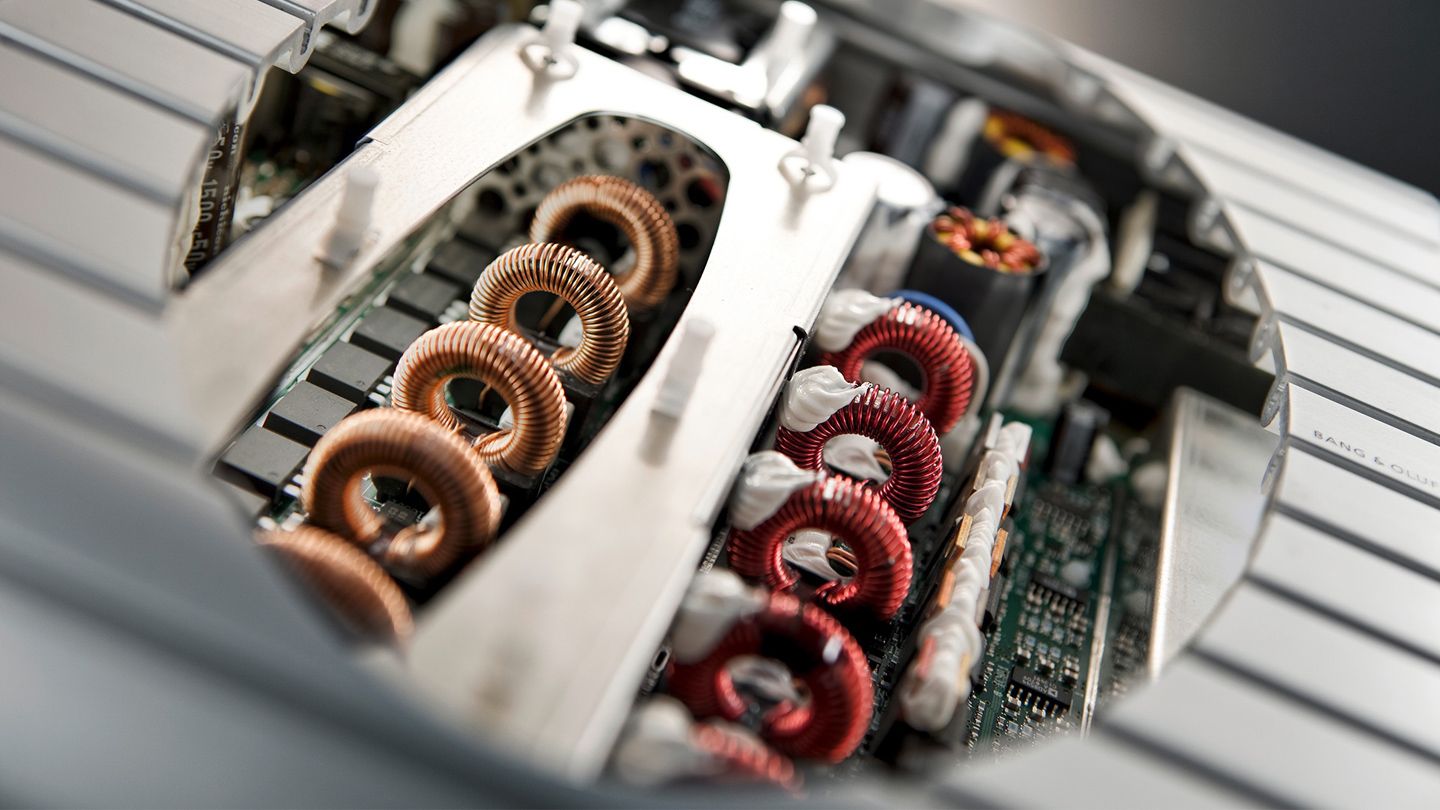
But first things first. As mentioned, sound development goes beyond just how the engine sounds: "On the one hand, AMG is about creating a distinctive sound that underlines the characteristics of the vehicle and has recognition value. On the other hand, it's about achieving this sound experience within the legal limits. The challenge is to establish a unique sound through which an AMG can be identified," says Blaeß. As an expert for interior sound, Pommerer adds: "The overall impression of a vehicle is dependent on stimulating many senses, especially in the performance sector. For me, it's crucial that the sound aligns with other sensations." Legal requirements, the right balance, and the coordinated interaction of all senses are some of the challenges to tackle on the way to producing a finished AMG.
Inspiration comes from the pair's curiosity and years of professional experience, which originated in their student days and, in Jörg's case, as an intern at AMG. But external partners and artists also provide necessary input when needed. "There are always collaborations to get inspired by and try out new approaches together. When it comes to development, however, we are left to our own devices. This is where things get very technical and small-scale," says Pommerer. Therefore, it is only at the start of a project that the collaborations have a significant influence on the engineers' day-to-day operations. There is a lot of work for everyone involved until the finished sound profile is ready. "While sound development is primarily about the emotions you want to evoke, it is first and foremost a technical job. First, CAD models have to be created for exhaust systems or loudspeakers, and then there are a large number of meetings and coordination sessions as well as extensive test track sessions," says Blaeß.
Mercedes-Benz SLS AMG Coupé Electric Drive (2013)
Pure innovation. The Mercedes-Benz SLS AMG Coupé Electric Drive marked the beginning of a new era for AMG in 2013. The first fully electric supercar not only highlighted the collaboration with AMG's colleagues from Formula 1, but it was a pioneer across the field: in technology, design, and driving experience. AMG's most powerful performance vehicle at the time set standards. And as a harbinger of electrification, the SLS Electric Drive was also a turning point for sound development. The solution to the missing engine sound was the so-called SLS eSound, which provided the driver with synthetically generated engine sounds and laid the foundation for future developments in the field.
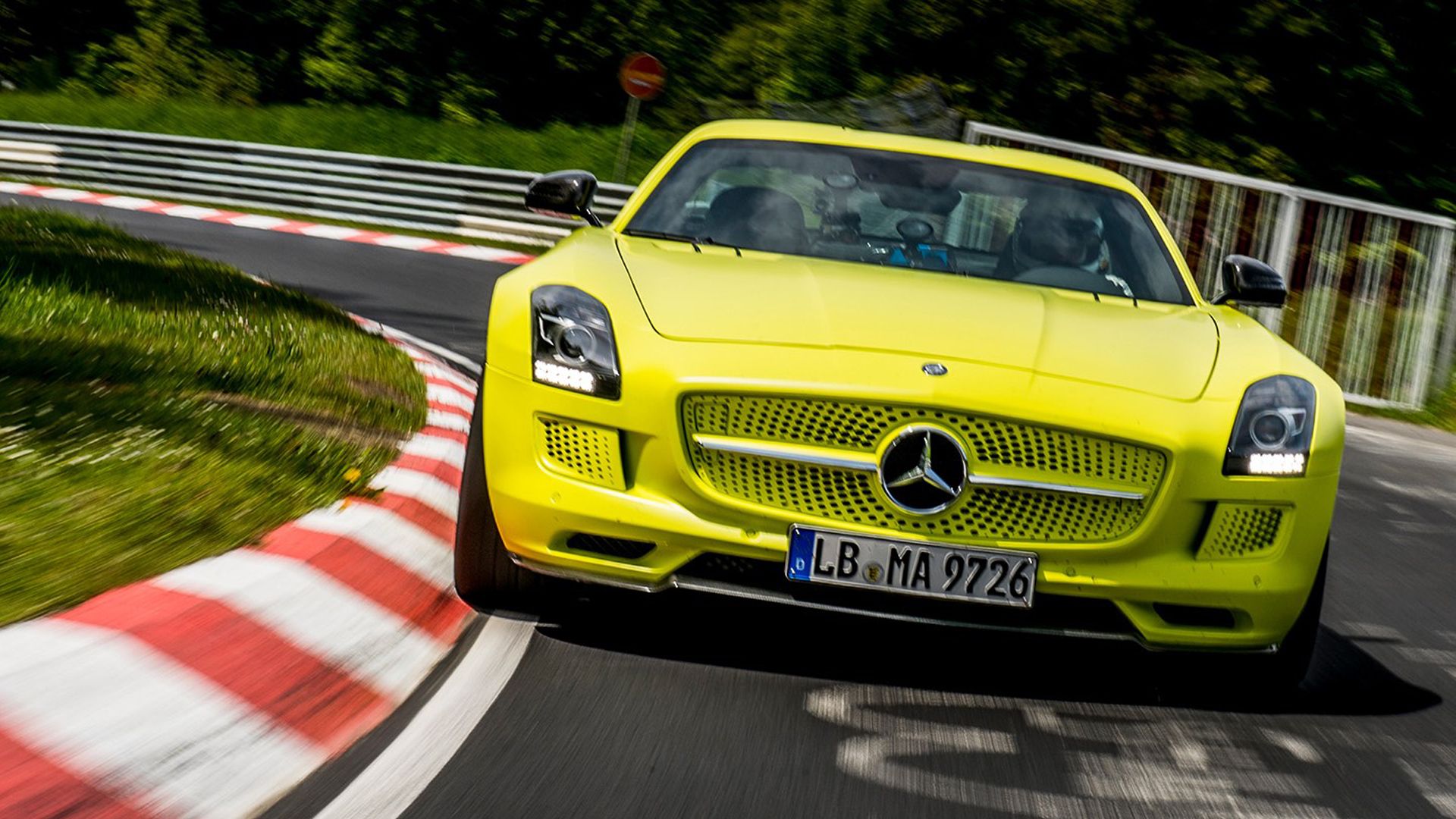
The time spent on the test track is also imperative for the veteran expert of exterior sound: "On the one hand, we have to meet legal guidelines, and on the other, we guarantee the best possible driving experience. To do this, we test the interior and exterior vehicle sound in every conceivable driving situation. From acceleration to full throttle to a leisurely drive – the driving experience must be coherent at all times," says Blaeß. Every day is different for the engineers. Or, to sum it up in Pommerer's words: "There's no such thing as a typical day at work."

The requirements for the test track are tightly regulated by law to ensure demarcation between the different vehicles and manufacturers. "Otherwise, each manufacturer could run individual tests and there would be no comparability whatsoever," notes Blaeß. "The goal is for a vehicle to be approved in any country, regardless of where it is produced." To achieve this, both the test site and the test procedure must be standardized. Specifically, the regulations dictate where the microphones are positioned for the recording, on which surface the vehicle moves, how the vegetation around the test site is landscaped, or at what temperatures the recordings may take place. "By contrast, there are sections on the test track where the focus is on the sound experience in various driving situations. Here, it's all about experience and emotion. The test track has various areas to simulate country roads, mountain roads, and winding roads, for example. Ultimately, the vehicle should not only overcome the legal hurdles, but also offer a cool sound."
Even though the focus of the test track is on measuring exterior noise to comply with regulations, the interior acoustics are also subjected to a series of test procedures. For this, however, Pommerer's team has a different focus: "While we also test on the track, these recordings are not the main priority. They are primarily used for documentation and analysis. We're mainly committed to the subjective auditory impression, both for the driving sound and the entertainment sound."
Like the work of the engineers, the legal requirements are also constantly changing. For example, in 2016, new regulations significantly changed more just the test procedure for Blaeß and his colleagues when it came to external sound: "At that time, they switched from a standard that had been in effect for almost 30 years to a completely revised guideline that turned the previously valid test procedure and catalog of requirements upside down. Today, state-of-the-art technology is used to prepare the test section. In addition, the static limit was replaced and a phase model was introduced, which came into force in 2020. In two- or four-year stages, the noise limits now continue to fall. For us, that means adjusting vehicles on a regular basis."
Before each respective performance vehicle can be tested on the track and put through its paces, a joint vision of the finished product is first drawn up. This document, sometimes several hundred pages long, forms the basis for the development work that follows and defines the target group and project brief. "Personal preferences thus play a smaller role. Individual experiences help, of course, although you also have to leave them out of the equation to a certain extent. Ultimately, it's about the overall product, and that will only be good if everyone adheres to the specifications in order to coordinate them precisely," says Pommerer, summarizing the internal collaboration. Blaeß warns: "Otherwise, there is the danger that everyone will find the supposedly perfect solution for themselves but that the interaction will not result in a perfect product. A Sprinter can't sound like a GT."
Mercedes-Benz A 45 AMG (2013) & Mercedes-AMG A 45 4MATIC+ (2019)
New design, new target audience. When it was launched in 2013, the Mercedes-Benz A 45 AMG boasted groundbreaking performance and efficient fuel economy in the compact class. In addition to the AMG 2.0-liter four-cylinder turbocharged engine – its 360 horsepower representing the world's most powerful four-cylinder – one of the highlights of the high-performance model was the variable exhaust flap. This provided an even more sentimental, even higher quality sound. It’s an enduring innovation. In 2019, the Mercedes-AMG A 45 4MATIC+ introduced the Real Performance Sound System, another innovation in sound development that will also feature in hybrid and electric vehicles in the future.

With ample energy, resources, and a bit of luck, the engineers achieved technical breakthroughs that continue to inspire and influence their work. For Pommerer, these models are ubiquitous: "There was a very big development push with the first A 45 after the introduction of the variable exhaust flap. Before that, the perception was that sound always needed to be dominant and powerful. The exhaust flap made it possible to cover a much broader spectrum, from a comfortable sound to a sporty sound." This approach was further refined over the following years. The Mercedes-AMG C 63, for example, already had three variable exhaust flaps. Coupled with the powerful V8 engine, this made it possible to achieve not only the characteristic sound of the V8, but also a much wider sound range.
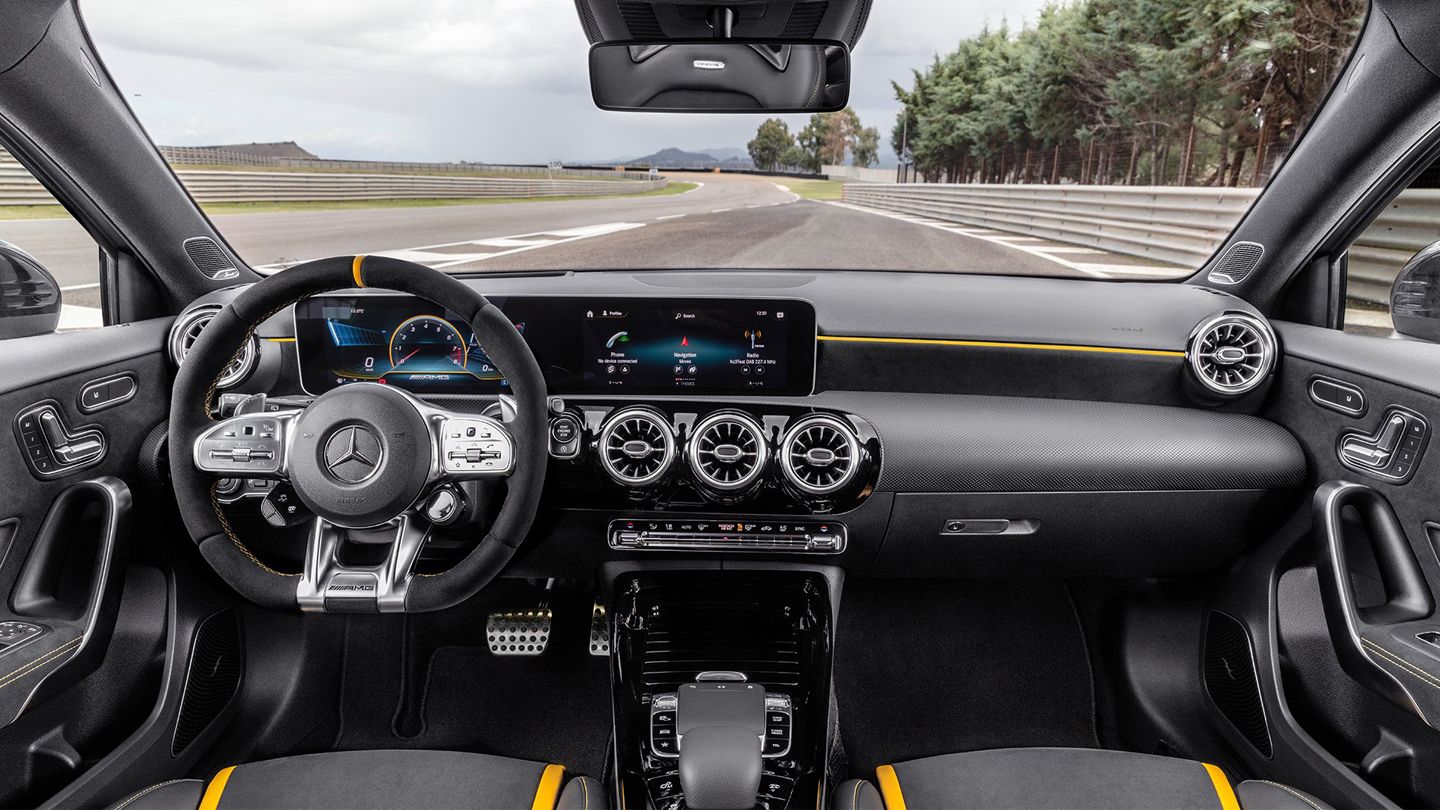
In addition to the Mercedes-Benz A 45 AMG, which celebrated its market launch in 2013, the same year saw the debut of the revolutionary Mercedes-Benz SLS AMG Coupé Electric Drive – the first fully electric AMG performance vehicle. To compensate for the lack of a recognizable engine noise, AMG developed a simulated engine sound which the driver heard through the speakers. For Pommerer, the successor to this technical innovation is, among other things, the "Real Performance Sound" system, which rolled out in 2019 with the Mercedes-AMG A 45 S 4MATIC+: "Here, the sound of the exhaust is recorded by a pressure sensor and amplified electro-acoustically in the interior." He sees synthetic systems continuing to gain importance in the future: "Given the regulations and emissions-reducing features such as particulate filters, as well as the electrification of the powertrain, this approach will become increasingly relevant moving forward as a satisfactory interior sound can no longer be achieved through the exhaust system alone."
For Blaeß, however, acoustic support for the motor not only adds to the atmosphere, but also to safety: "The sound enhances the general driving experience and the perception of speed. Otherwise, it's hard to assess how fast you're going during electric driving. Unlike in a combustion engine, the engine sound is not a familiar indicator. Without the sound, a necessary sensory experience is otherwise absent."
When asked which current AMG model is most exciting acoustically, Blaeß finds it hard to hold back his fascination: "The Mercedes-AMG Project ONE. It's an unforgettably unique vehicle." Of course, the influence of Formula 1 is omnipresent in the hypercar, but it also provides valuable insights for upcoming hybrid and electric vehicles. "For our other hybrid powertrains, we are in close coordination with our Formula 1 colleagues and trying out new things. For example, we will be able to adopt some aspects of the new powertrain for our hybrid fleet," says Blaeß. Pommerer adds: "This applies to all other components. The components of Mercedes-AMG Project ONE are currently the technical spearhead of development. It won't be possible to adopt many of them for production vehicles on a one-to-one basis, but they definitely provide inspiration. The vehicle will also have a formative influence on the development of future generations of vehicles."
Mercedes-AMG C 63 (2015)
A high-performance athlete with thrilling sound. When the Mercedes-AMG C 63 celebrated its world premiere in 2015, the optional performance exhaust system concealed the development of the variable exhaust flap that was introduced in the Mercedes-Benz A 45 AMG. For the Mercedes-AMG C 63, the number of flaps was tripled for a broader, higher-quality sound spectrum. This approach will continue to set the trend in sound development in the future in order to provide customers with the ideal acoustic ambience in every driving situation.
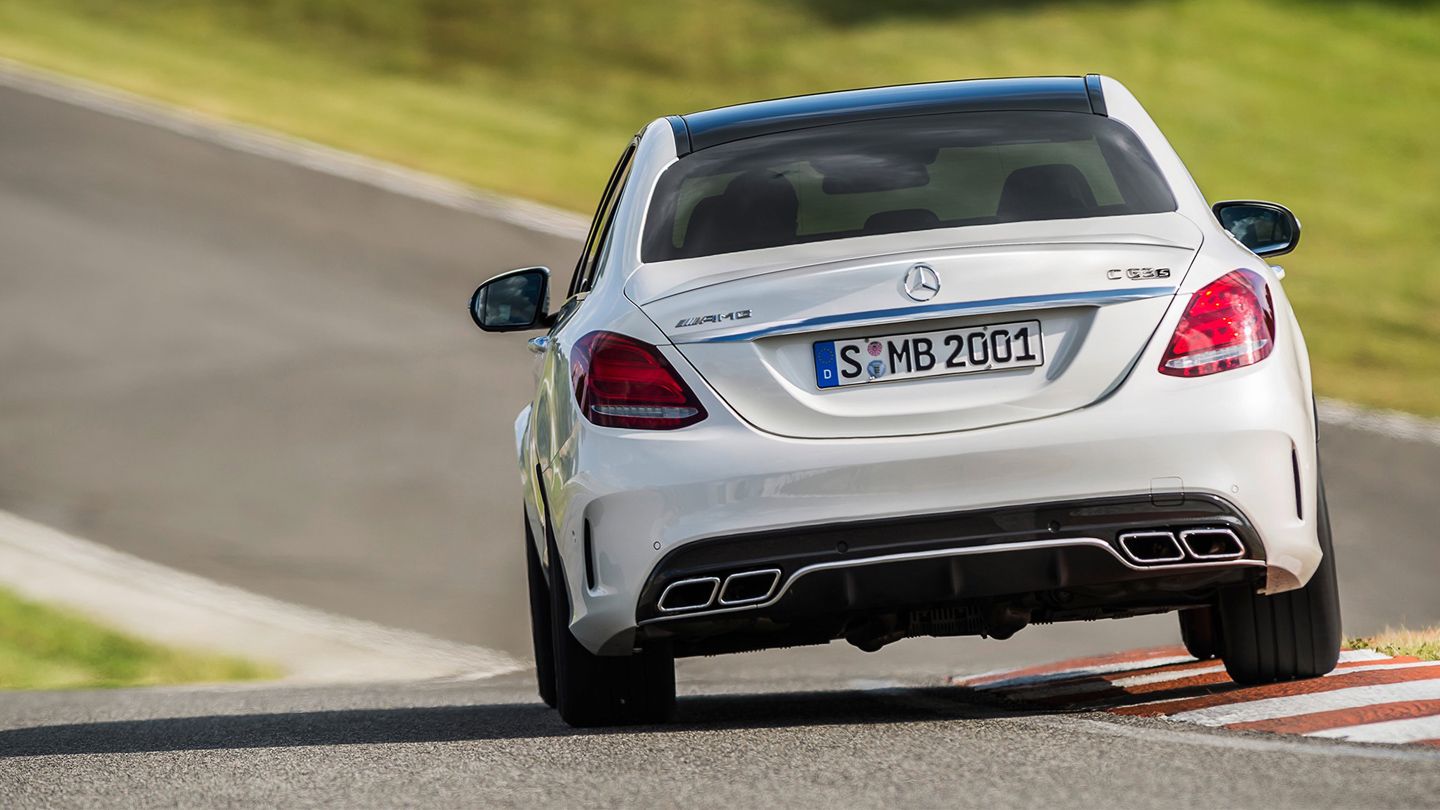
The signs of the times call for innovation and the challenges of electrification also play out in sound development. In contrast to the classic combustion engine, electric powertrains complicate the work of engineers since new legal requirements mean that market-tested sounds must first be established. Nevertheless, certain commonalities remain for Blaeß: "Basically, I have to safeguard the maximum decibel level regardless of whether it's a combustion engine or electric vehicle. As soon as purely electric driving is possible, the minimum decibel level comes into play. With hybrid and electric vehicles, new functions and tasks are added that did not exist before. Unlike with traditional engines, we have no established noises, no experience of how, for example, a change from internal combustion to electric should sound." Pommerer agrees: "More electric driving programs are being added. That means we have even more variance, which is great for us, but also challenging. In addition, there are new functions to consider, such as an acoustic pedestrian protection system. Again, we remain ambitious in creating a unique sound experience."

For Pommerer, one approach to solving the problem is to offer broad sound experiences with a dedicated focus for specific models and gradations in the driving programs. "The trend is definitely in the direction of offering a differentiated sound experience. The basis is to first design a comfortable vehicle in terms of noise and vibration. Then we build on that. An S-Class initially sounds different from a GT R, yet a sportier sound experience is also possible in this case. And this is precisely the choice that will be available for electric and hybrid vehicles. In pure electric driving mode, the sound of the powertrain is simply unspectacular and lacks variety. That's why we need to provide acoustic support – both for fully electric and hybrid vehicles – especially when it comes to the sporty driving programs. AMG can be more than just a typical V8."
Sound development will continue to enhance the pleasure of driving an AMG. And where challenges await for Blaeß and Pommerer's team, there are also opportunities: "We are very excited to see how our customers and the press receive our hybrid and electric vehicles. We have spent a lot of time developing a sound that suits the vehicles and has recognition value. I hope that we will hit the mark. However, development won't end there. It will be an ongoing process for years to come, so I'm very excited about the future."
We hope you enjoyed our insight into the exciting world of sound development at Mercedes-AMG. In the next episode, you can expect an exclusive preview of the vehicle design of the future when we visit our designers in Sindelfingen.

Sounds for Download
Download motorsport atmosphere to your smartphone.

AMG Vehicles
The spot for exciting updates regarding our AMG models including walkarounds, technical backgrounds and first-hand information from our product experts.